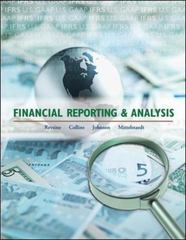Article: https://blogs.wsj.com/economics/2011/03/10/okuns-confounding-law-here-we-go-again/ ARTICLE MENTIONED^ EC471/571 Monetary Theory Fall 2020 Applied Project #1 Okun's Law is a well-known proposition that relates the pace Of economic growth

Article:
https://blogs.wsj.com/economics/2011/03/10/okuns-confounding-law-here-we-go-again/
ARTICLE MENTIONED^



EC471/571 Monetary Theory Fall 2020 Applied Project #1 Okun's Law is a well-known proposition that relates the pace Of economic growth to unerrwoyment. Traditionally, policymakers have used Okun 's Law as cne indication Of maximum sustainable growth. If the pace Of economic growth has a consistent impact unemployment, then policymakers can target a particular pace Of growth that sets the unemployment rate to a level consistent With stable inflation. On a seemingly regular basis, however, the economics profession comes to believe that Okun's Law has broken down. Most recently, this breakdown occurred the wake Of the 2(M-09 recession. From the Wall Street Journal: Okun S law has been a staple tool for economists ever since, but it's been driving them crazy lately because it doesn t seem to be working all that Ell. Similar concerns were voiced in the late 1970's. From the Washington Post: What has punched holes in Okun S Law in recent months is the change in another somewhat arcane-sounding measure - the size Of the productivity gains that the nation can expect to achieve over the Eng run. In this project, you Will explore this version Of Okun's Law over different two time periods: where: Ut is the unerrwoyment rate. Ut is the natural rate Of unemployrnent_ Yt is real output (gross domestic product), logged. Yt is real Output (gross domestic product), logged. (Yt Yt) is the output gap measured as a difference Of output frorn potential output _ We want to see estimates Of Okun's law changes over the following sample periods: and The RATS code to run these regressions is: "'irnport data"' calendar(q) 1960:1 gdpcl gdppot nroust unrate " transform data' " log gdpcl / loggdp log gdppot / Icgdpot set outputgap = (loggdp - Et ugap = unrate - nroust Iinreg ugap 1984: 1 2007:4 # constant outputgap
Step by Step Solution
There are 3 Steps involved in it
Step: 1

See step-by-step solutions with expert insights and AI powered tools for academic success
Step: 2

Step: 3

Ace Your Homework with AI
Get the answers you need in no time with our AI-driven, step-by-step assistance
Get Started


